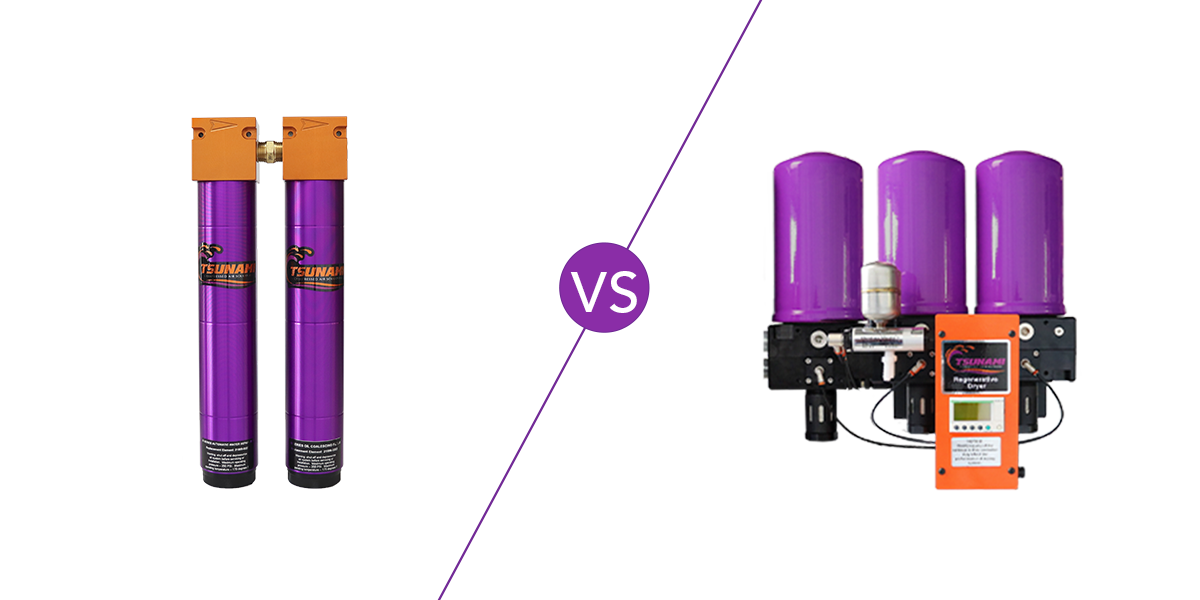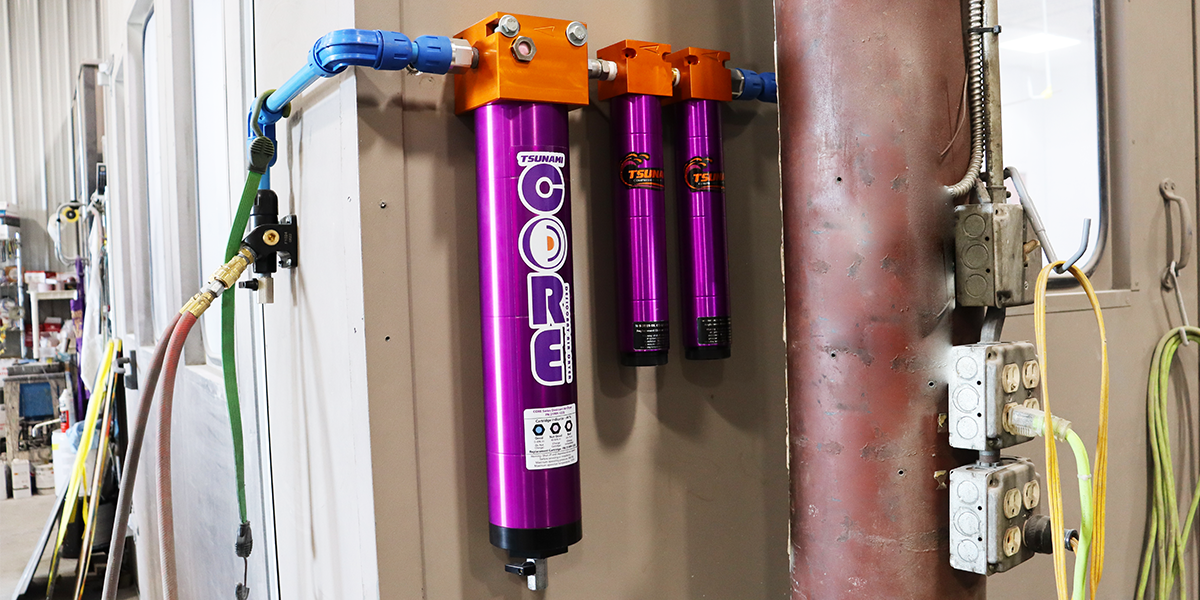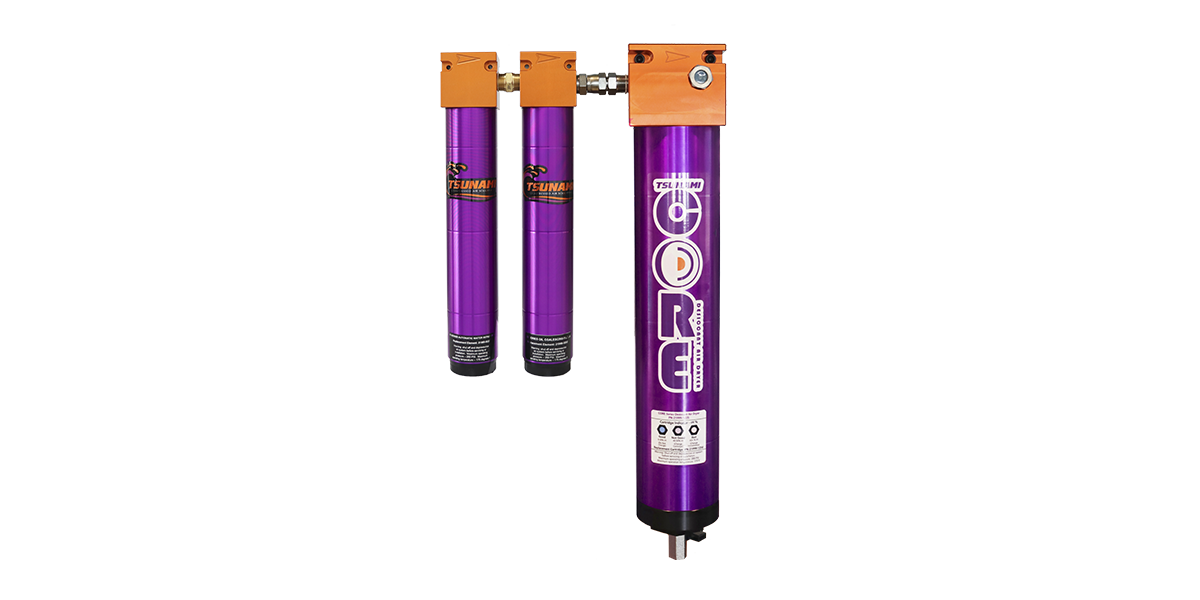When it comes to having clean air, air filters are the driving force behind it. They pull out dust, oil, water, and particulates to create the air you need for applications. Although effective on their own, it can get better.
Did you know that even after air flows through an air filter, there is still water remaining in your air stream? This is because there are two main kinds of water in the air: liquid water and water vapor. Air filters are designed to pull out liquid water, but a different device is required to create crisp, dry air. If you are looking for clean and dry air, Tsunami has your solution; but it requires an upgrade.
Here are three reasons why your air filters need an upgrade.
Article contents:
- Clean Air Isn't Dry Air
- Air Filters are Different Than Air Dryers
- Customers Expect Perfect Finishes, Every Time
- Upgrade Your System
Reason #1: Clean Air Isn't Dry Air
The air we all breathe contains contaminants and water, some more or less depending on the environment (there's a reason air quality detectors exist). In the same stream of thought, the contaminated, water-filled air we breathe is the same air that goes through compressed air systems.
The purpose of air filters is to pull out dust, oil, contaminants and bulk water to provide the cleanest air possible for applications; but that doesn't mean it's dry. Here's why:
Liquid Water vs Water Vapor
While both a form of water, liquid water and water vapor are different in the ways they interact with the world. Liquid water is dense; it remains the same volume, and can be easily seen, transferred and touched. Liquid water is what air filters are pulling out while the air is moving through the layers.
On the other hand, water vapor is low in density and can compress or expand depending on the air pressure. Water vapor can be felt in the air in the form of humidity, but unlike liquid water, it is invisible to the eye because it is in a gaseous form. With that said, there is one exception: it can be seen in the damage it can cause.
Rule of 20
Speaking of water vapor and air pressure, let's talk about the Rule of 20. This rule states that for every 20°F air is cooled, it loses 50% of its ability to retain moisture. So, for every 20°F the temperature drops, 50% of the humidity (water vapor) in the air will condense.
Now, I know what you're thinking: How does this apply to compressed air?
When the air is flowing through an air system, the air is compressed and experiences an raised temperature because of the increase in pressure, and the decrease in volume. The hot air cools as it travels through the air system, and condenses the humidity.
For every 20°F the air is cooled, 50% of the humidity will turn into water droplets and stay inside the air lines attached to the system.
How Humidity Enters Your Air Stream
As discussed earlier, air has water in it, including liquid water and water vapor (humidity). From the moment air enters the air filtering system, it is being stripped of water. So how does water enter your air stream?
First, the air travels through an air filter and the bulk (liquid) water is taken out of the air stream. If there aren't any additional devices attached to the system after the air passes through the air filters, it exits the system.
When the air exits the system immediately after filtering, humidity remains in the air stream and enters your application. This is because there wasn't an additional air drying device to pull the humidity out of the flow.
The most effective way to remove all humidity from your air stream is by adding an air dryer to do what an air filter can't do.
Reason #2: Air Filters are Different Than Air Dryers
Air filters and air dryers go through different filtering processes, which means they filter out different contaminates when air passes through them. Even so, they share a common goal: creating the best quality air for the intended application. We will discuss the main differences between each air solution, but let's touch on what they accomplish alone.

What's an Air Filter?
An air filter is a device built to efficiently remove dust, oil, bulk (liquid) water, and smaller, invisible contaminants such as aerosols and vapors. This is accomplished with the help of an air flow connection, and layers designed to target and pull out specific contaminants.
This is to ensure each particular contaminate is fully pulled out of the air flow to give you the purest, cleanest, air for your application.
What's an Air Dryer?
An air dryer is a device, designed to remove any remaining water vapor (humidity) from the air flow. It is what makes the air completely dry after going through an air system.
Although an air dryer isn't always necessary, it is considered the final step in the filtering process; and the most important if you need crisp, dry air.
What's the Difference Between Air Filters and Air Dryers?
Air filters are designed to pull out a variety of contaminants from oils to dust. In comparison, an air dryer is designed solely for the use of pulling out humidity and any remaining water in an air stream.
They are often paired together for the very reason they are different: the filter takes out the small and bulk contaminants, and the dryer finishes the process by ensuring even the smallest speck of liquid water or water vapor doesn't touch an application.
This means the only air being applied to an application or going through the air stream is world-class dry thanks to the addition of an air dryer. Air dryers take your application to the next level, and the difference is incomparable.
Reason #3: Customers Expect Perfect Finishes, Every Time
What customers value the most out of businesses is simple: consistency. With compressed air applications, not only does the work need to be consistent, it needs to be done with precision and look just as good as the last application.
In this article, we're using automotive paint finishing as an example:
Effects of Poor Air Supply on Paint Finishes
If there is poor air filtration, then there will be an equally as poor paint finish; but the negative effects don't stop there. This is what can happen if humidity stays in your air stream, and the air supply goes awry:
- Aesthetically: an uneven, blotchy, or specked appearance giving an unprofessional looking finish.
- Functionally: lack of durability with premature chipping or peeling.
- Professionally: bad reviews, less business coming in, and few returning customers.
Having clean and humid-free air is crucial to achieving a smooth, seamless, coat of paint and an easy sailing business.

Why You Need An Air Filter AND An Air Dryer
When it comes to specific compressed air applications, an air filter and air dryer are required to get the finish you're looking for. An air filter providing air free of dirt, oil, water, and other particulates working in tandem with an air dryer pulling any remaining humidity from the air stream creates crisp, clean, dry air.
Upgrade Your Existing Air Filter Package to an Air-Drying System
Air dryers are often starting at such a high price, upgrading is overlooked. Consequently, cheaper and less effective alternatives are used - and your applications suffer. Not anymore. Here at Tsunami, we heard what you had to say, and we listened.
The all new CORE Series Desiccant Air Dryer brings you world class dry air at an affordable price, designed solely for intermittent, lower pressure, point-of-use applications. It's easy to install, easy to maintain, and provides clean, crisp, dry air for all of your application needs.
The CORE dryer is designed as a complete package and includes inline pre-filtration to remove bulk liquids and fine particulates prior to drying.
The CORE Desiccant Air Dryer is now available for pre-order with ship dates beginning in August.
Superior air treatment starts with Tsunami
Have more questions about air filters and the CORE dryer? Contact us today.



